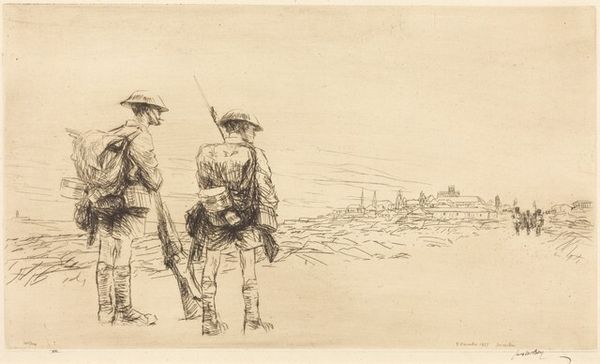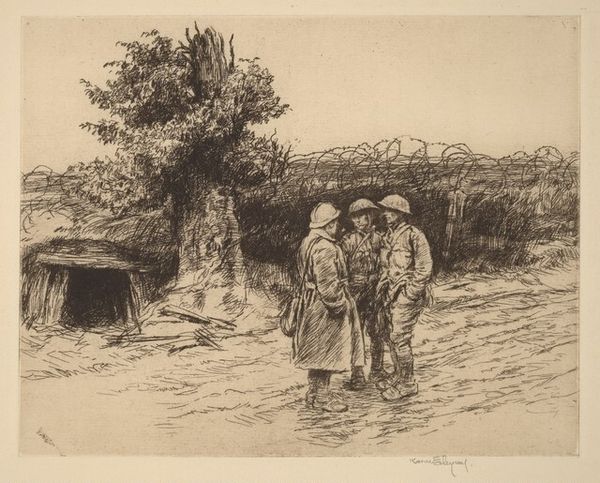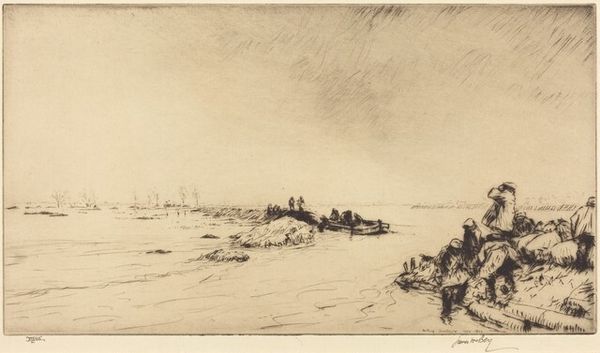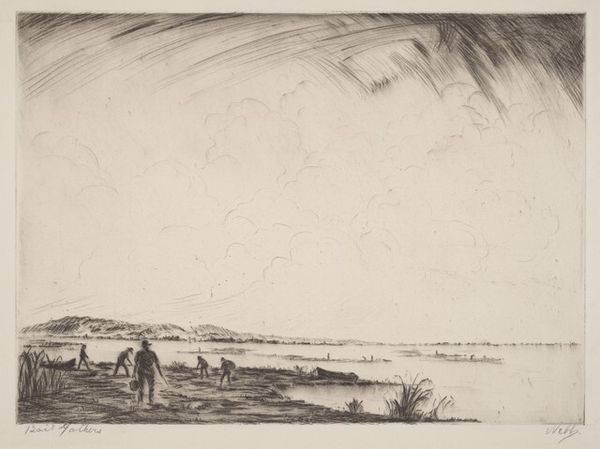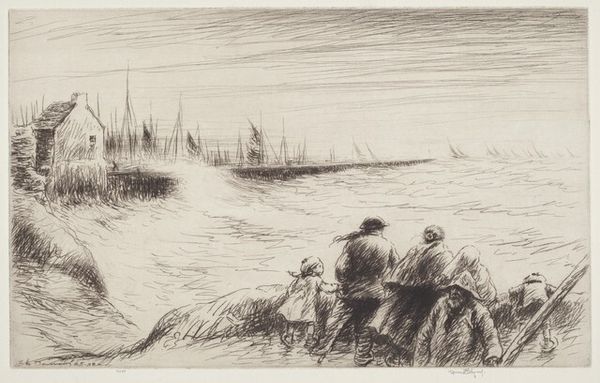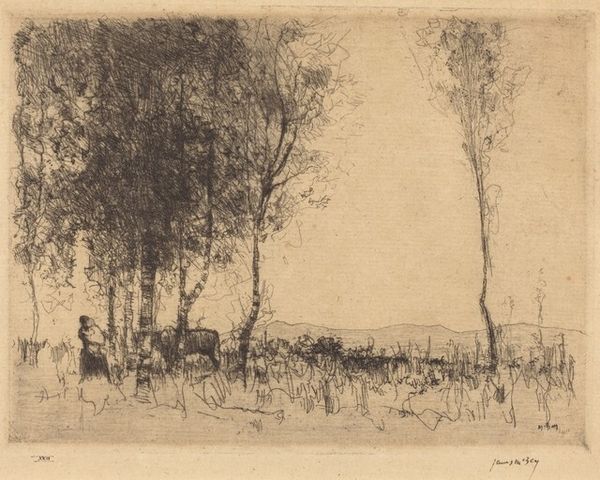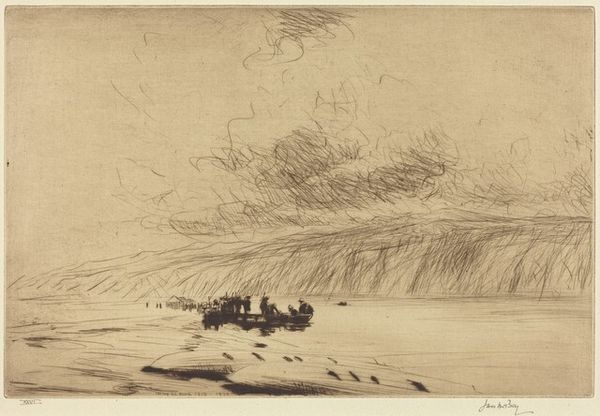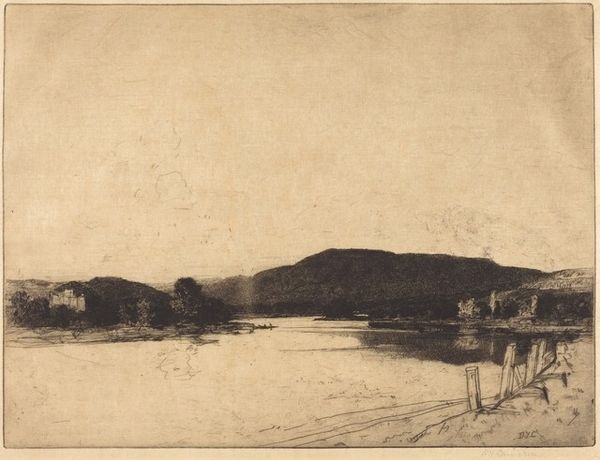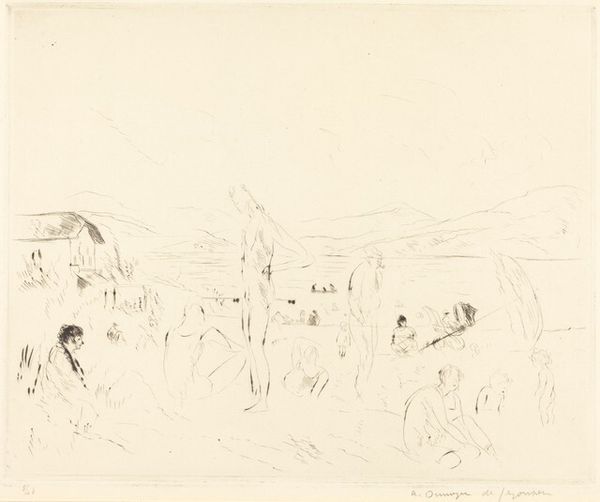
Copyright: National Gallery of Art: CC0 1.0
Curator: David Young Cameron completed this etching, titled "Three Vagrants," in 1892. The figures, rendered in graphite and pencil, are starkly realistic against a broader landscape. Editor: My immediate impression is of muted resilience. The limited tonal range emphasizes the travelers' isolation yet also conveys a sense of stoic determination as they face forward on a meandering path. Curator: Right, it’s a fascinating encapsulation of late 19th-century social realities. Cameron often depicted rural landscapes, but in works like this, we see a deeper commentary on the economic hardships faced by many. Consider the social disruption following industrialization, which fueled widespread poverty and internal migration. Editor: Yes, the path itself takes on symbolic weight. Its winding, uncertain direction evokes the unpredictable nature of their journey, a visual metaphor for the vagrant life. Also, the single mature tree standing to the right has the feeling of an upstanding moral entity juxtaposed with the moving band. Curator: Precisely. And the family unit here is critical. While the term "vagrant" carried legal and social stigmas, particularly around mobility and labor, it also obscured the complex realities of these individuals' lives and circumstances, reducing humanity into labels for the public to understand and therefore control the fear. The small figures in the distance behind the trio and just at the center horizon also echo that larger dynamic. Editor: Visually, their close grouping also speaks of mutual dependence and protection. There’s a poignant beauty in the mother's protective stance. Also, what I read as perhaps the pack she bears shows the physical hardships. One could wonder whether Cameron intended it to represent all women. Curator: Cameron walks a tightrope between social commentary and aesthetic Romanticism. His skill in etching captures the light so it gives a dignified quality. But it also doesn't shy away from showing that these vagrants stand as the shadow of Victorian ideals of progress and prosperity, challenging any idealized notions of rural life and labor in Britain. Editor: Ultimately, what stays with me is this contrast between the vulnerability of the figures and the vastness of the landscape. They seem diminished and powerful all at once. Curator: It's that tension, that duality that makes the print resonate. Cameron forces us to confront a segment of society often ignored, reminding us of their presence within the larger fabric of Victorian society.
Comments
No comments
Be the first to comment and join the conversation on the ultimate creative platform.
